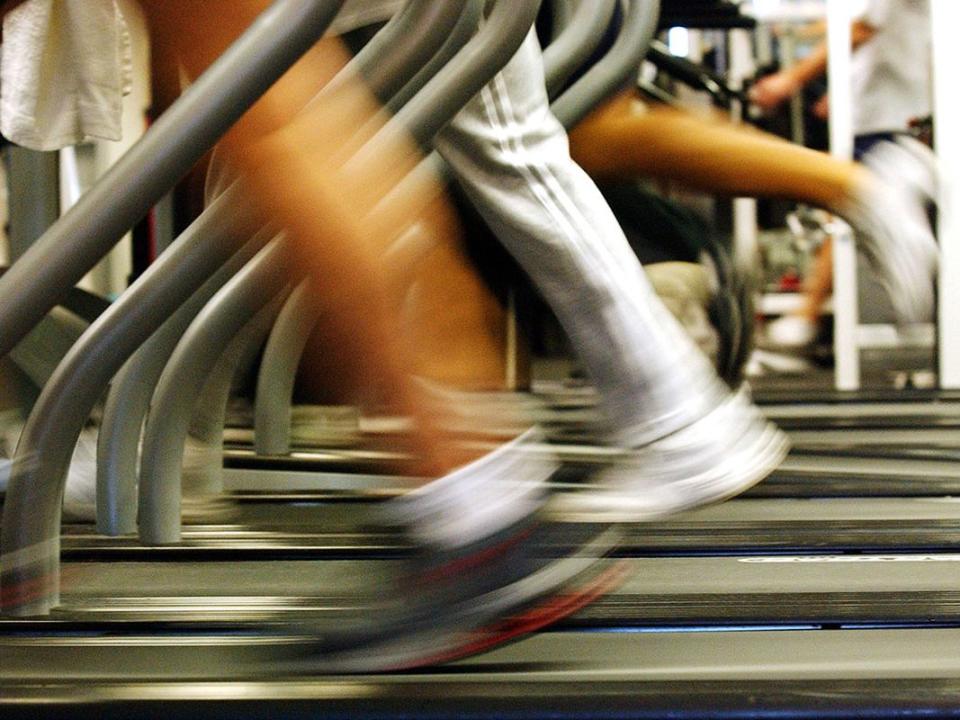William Watson: Let's unplug the inflation treadmill

In the partly self-governing suburb of Montreal where I live, the big political topic these days is whether to replace our almost 60-year-old arena and swimming pool with a modern sports complex. It’s a refreshing change from the usual, surprisingly contentious topic of where to put the dog runs.
The successful bid was $38.2 million. We’ve got federal/provincial grants of $12.6 million. A few million dollars of private fundraising will help. The rest will be financed by about a five per cent increase in property taxes. For the record, our family is in favour, though we probably got more than our money’s worth out of the old pool and rink. A referendum is likely to decide the issue.
What intrigued me most about the debate are newspaper clippings the mayor recently released describing debates that took place on this issue in 1964. His point was that many of the same objections had been raised then as are being raised now — and were eventually overcome. But what struck me was how much things had changed. First, so far as you can tell by given names, none of the committees struck to investigate the issue included a woman. Compare that with our current town council, made up of a male mayor and four female councillors. Also, so far as you can tell by family names, none of the intervenors in the town meetings were francophone: Montreal is now much more integrated linguistically than it was then.
But the most astonishing difference is that the arena/pool complex discussed in 1964 was to cost all of $450,000. Today’s proposed complex is bigger and nicer and will have more facilities — a gym, yoga rooms, pickle ball and so on — but the overall bill is not far from being 100 times greater. One hundred times! It’s certainly not going to be 100 times bigger and nicer!
Montrealers faced the same reflection when the Champlain Bridge to the south shore of the St. Lawrence was rebuilt. A bridge that had cost $35 million in the 1950s was replaced with a — yes, somewhat bigger and nicer bridge — that cost in the billions of dollars in the 2010s.
The problem, of course, is inflation. The Bank of Canada’s Inflation Calculator suggests that, on average, what cost $450,000 in 1964 costs $4.29 million in today’s dollars — roughly nine and a half times as much, a cheapening of the currency that is a stain on the record of every government from 1964 on.
But as if a ninefold depreciation of the currency wasn’t bad enough, we’re paying nine times that for our new arena, which means either we’re getting a much nicer spread or that inflation has been even more rapid for this kind of purchase — or a bit of both. In fact, construction is a sector where costs skyrocketed both during and after the pandemic. Just three years ago, in 2020, the estimated cost of our new complex was “only” $22.6 million.
All this came to mind when reading a quote from a picketing federal civil servant who said of the current strike, “When federal public servants get the wages we deserve, that sets a precedent for private industry, too. When we do better, all Canadians do better.” If you want a definition of magical thinking, that could serve.
I do hope the good folk at Postmedia who finance these columns will note whatever precedent any federal settlement creates so that all us ink-stained, screen-fried wretches will be able to keep up with federal civil servants, whose eventual pay increases our taxes and our share of the federal debt will be bankrolling. No reflection on our paymasters but one difference between them and the federal Treasury Board is that they don’t have access to a printing press that does money — does it legally, at least.
If federal workers were really hard done by, they’d quit more often
Regulation failed on Silicon Valley Bank. Let’s regulate more
Federal civil servants running faster means the rest of us have to run faster, too, to keep up. But of course inflation is a race nobody really wins. If we all get the same wage and salary increases as the strikers end up with, that increases costs. And businesses, not being charitable institutions, pass costs on. Actually, even charitable institutions have to face up to the effects of cost increases. After another generation or two of inflation, we’ll all have bigger, fancier-sounding incomes with more zeroes at the end. But in real terms, those salaries will buy the same as they did before. We’ll run and run and run and nobody will get ahead. Inflation is not a road race. It’s a treadmill.
Of course, it’s a treadmill some people and sectors are better at than others. Relative prices do change, as they have in construction and government, two areas where they’re higher. But wouldn’t it all be a lot easier if the average of prices didn’t change, if arenas did still cost $450,000 on average and when a price or wage did go up, everyone understood that wasn’t just inflation, it was a relative price, a real price, rising.
Some treadmills are good for you. The inflation treadmill mainly benefits bullies with sharp elbows.

 Yahoo Finance
Yahoo Finance 